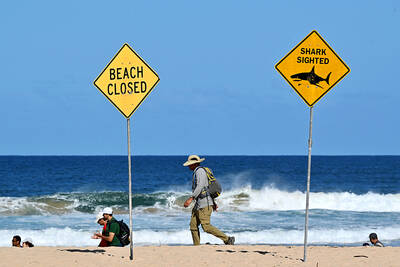Fluoride in tap water can cause bone cancer in boys, a disturbing new study indicates, although there is no evidence of a link for girls.
New US research suggests that boys exposed to fluoride between the ages of five and 10 will suffer an increased rate of osteosarcoma -- bone cancer -- between the ages of 10 and 19.
In the UK, fluoride is added to tap water on the advice of bodies such as the British Dental Association. The Department of Health maintains that it is a cost-effective public health measure that helps prevent tooth decay in children.
The increased cancer risks, identified in a newly available study conducted at the Harvard School of Dental Health, were found at fluoride exposure levels common in the US and other countries. It was the first examination of the link between exposure to the chemical at the critical period of a child's development and the age of onset of bone cancer.
Although osteosarcoma is rare, accounting for only about 3 percent of childhood cancers, it is especially dangerous. The mortality rate in the first five years is about 50 percent, and nearly all survivors have limbs amputated, usually legs.
The research has been made available by the Environmental Working Group (EWG), a respected Washington-based research organization. The group reports that it has assembled a "strong body of peer-reviewed evidence" and has asked that fluoride in tap water be added to the US government's classified list of substances known or anticipated to cause cancer in humans.
"This is a very specific cancer in a defined population of children," said Richard Wiles, the group's co-founder.
"When you focus in and look for the incidence of tumors, you see the increase. We recognize the potential benefits of fluoride to dental health," Wiles said, "but I've spent 20 years in public health, trying to protect kids from toxic exposure. Even with DDT, you don't have the consistently strong data that the compound can cause cancer as you now have with fluoride."
Half of all fluoride ingested is stored in the body, accumulating in calcifying tissue such as teeth and bones and in the pineal gland in the brain, although more than 90 percent is taken into the bones.
Anti-fluoride campaigners argue that the whole issue has become highly politically sensitive. If health scares about fluoride were to be recognized in the courts, the litigation, especially in the US, could be expected to run for decades. Consequently, scientists have been inhibited from publicizing any adverse findings.
The new evidence only emerged by a circuitous process. It was contained in a Harvard dissertation by Dr Elise Bassin at the Harvard School of Dental Medicine. The dissertation, completed in April 2001, obviously had merit because Bassin was awarded her doctorate.
However it has not been published. Environmental organizations were repeatedly denied access to it, and even bodies such as the US National Academy of Sciences could not get hold of a copy. Eventually two researchers from the Fluoride Action Network were allowed to read it in the rare books and special collections room at Harvard medical library.

With much pomp and circumstance, Cairo is today to inaugurate the long-awaited Grand Egyptian Museum (GEM), widely presented as the crowning jewel on authorities’ efforts to overhaul the country’s vital tourism industry. With a panoramic view of the Giza pyramids plateau, the museum houses thousands of artifacts spanning more than 5,000 years of Egyptian antiquity at a whopping cost of more than US$1 billion. More than two decades in the making, the ultra-modern museum anticipates 5 million visitors annually, with never-before-seen relics on display. In the run-up to the grand opening, Egyptian media and official statements have hailed the “historic moment,” describing the

SECRETIVE SECT: Tetsuya Yamagami was said to have held a grudge against the Unification Church for bankrupting his family after his mother donated about ¥100m The gunman accused of killing former Japanese prime minister Shinzo Abe yesterday pleaded guilty, three years after the assassination in broad daylight shocked the world. The slaying forced a reckoning in a nation with little experience of gun violence, and ignited scrutiny of alleged ties between prominent conservative lawmakers and a secretive sect, the Unification Church. “Everything is true,” Tetsuya Yamagami said at a court in the western city of Nara, admitting to murdering the nation’s longest-serving leader in July 2022. The 45-year-old was led into the room by four security officials. When the judge asked him to state his name, Yamagami, who

‘CHILD PORNOGRAPHY’: The doll on Shein’s Web site measure about 80cm in height, and it was holding a teddy bear in a photo published by a daily newspaper France’s anti-fraud unit on Saturday said it had reported Asian e-commerce giant Shein (希音) for selling what it described as “sex dolls with a childlike appearance.” The French Directorate General for Competition, Consumer Affairs and Fraud Control (DGCCRF) said in a statement that the “description and categorization” of the items on Shein’s Web site “make it difficult to doubt the child pornography nature of the content.” Shortly after the statement, Shein announced that the dolls in question had been withdrawn from its platform and that it had launched an internal inquiry. On its Web site, Le Parisien daily published a

DEADLY PREDATORS: In New South Wales, smart drumlines — anchored buoys with baited hooks — send an alert when a shark bites, allowing the sharks to be tagged High above Sydney’s beaches, drones seek one of the world’s deadliest predators, scanning for the flick of a tail, the swish of a fin or a shadow slipping through the swell. Australia’s oceans are teeming with sharks, with great whites topping the list of species that might fatally chomp a human. Undeterred, Australians flock to the sea in huge numbers — with a survey last year showing that nearly two-thirds of the population made a total of 650 million coastal visits in a single year. Many beach lovers accept the risks. When a shark killed surfer Mercury Psillakis off a northern Sydney beach last